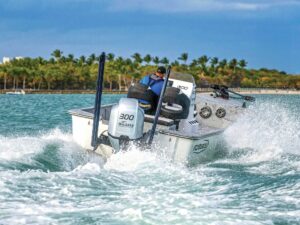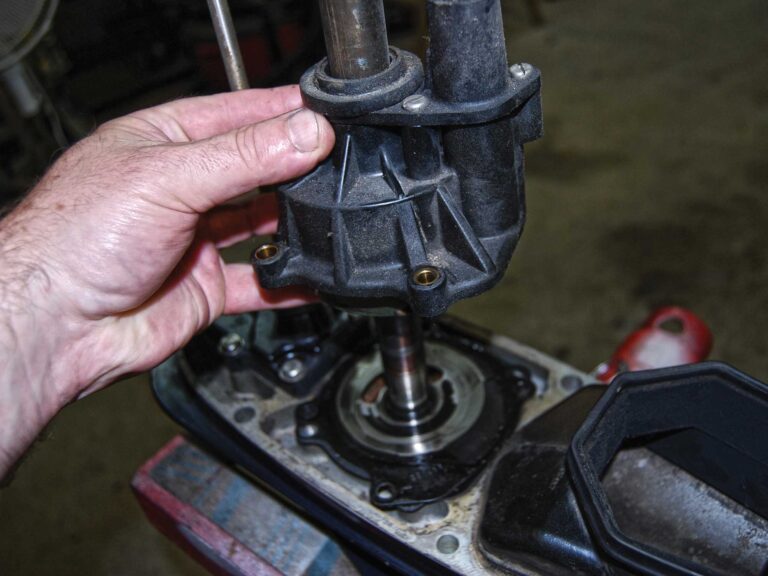
When your boat’s propeller or running gear tangles with line or netting, you are dead in the water. Techniques for clearing a fouled prop vary with conditions, the type of power and the experience of your crew.
“Ghost pot,” uttered Capt. Patrick Cline.
Hurtling offshore aboard one of three big, fast boats we’d arranged with Suzuki for a recent photo shoot, the center engine of our trip-equipped CC entangled with the line from a crab trap that was no longer attached to its float. Likely, another boater ran it over and cut it off.
Engines stopped, Cline climbed onto the platform, leaned out between the engines, and attacked the monumental mess. Tall, fit, carrying a serrated knife and wearing a life jacket, he proved himself able and properly prepared. In a few minutes, 20 pounds of multicolored tangle came aboard, and we throttled away.
A different crew, in different conditions and with different power may have required a different solution. What’s the best way to clear a fouled prop? The best answer is: “It depends.”
First, try untangling the prop without cutting. Shift into neutral, turn off the engines, and try to grab the end of the line with a boat hook. I’ve pulled some wrapped lines right off this way. A helper can turn an inboard’s shaft by hand (or with a strap wrench) while you pull.
Failing that, don a life jacket, and lean overboard only if conditions permit. Many inboard propellers will be out of reach. For that reason, Sailor’s Solutions offers the Hooknife ($84, sailorssolutions.com). This is a V-shaped knife that comes attached to an adjustable-length handle. With it, you might be able to cut away the fouled line. Also, you can fit your inboard shaft with a line cutter such as the Piranha (retmarine.com), Shaft Shark (ab-marine.com) or Spurs (spursmarine.com).
Read Next: DIY Propeller Repairs

In a pinch, you can use duct tape (approved use No. 435) to attach a knife to a mop handle or boat hook and extend your reach under or behind the boat. A serrated blade, or a hacksaw with a coarse tooth count—such as 14 to 16 TPI—works best. Diving deeper, full-frame hacksaws might prove less than ideal in the tight spaces between the prop and hull of an inboard or prop and anti-ventilation plate of an outboard or sterndrive. A hacksaw frame that allows the blade to extend in front of it is easier to maneuver. So is a “stab saw.” Perhaps most maneuverable is a hacksaw blade with wraps of duct tape creating a handle on one end (approved use No. 476). Naturally, you’d need to be able to reach the tangle. See above.
I don’t recommend going overboard because a boat will often drift faster than we can swim. Tethering oneself to the boat, with a helper on board tending the line, could prove helpful if you act against this advice.
The answer might be that you need to call a tow. Remember: If the gear ain’t clear, stay right here! Even if you clear the prop, you’ll want to make sure that the seals are intact. Running without that fact verified can cost you more than a tow.
Stay safe.









